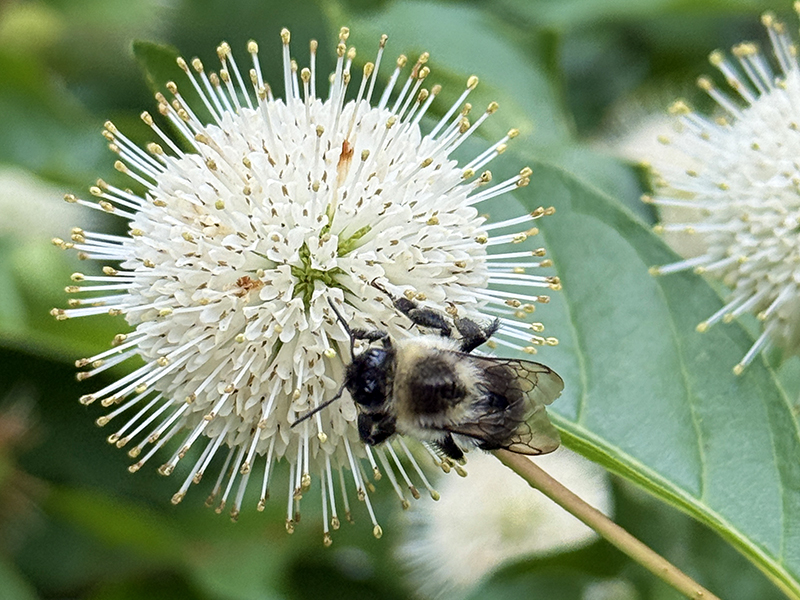
July 16, 2025| Education, Environment
By: Laurie Kane
Now blooming in our native gardens, common buttonbush (Cephalanthus occidentalis) is a distinctive ornamental shrub with fragrant, creamy white flowers that stand out against glossy dark green leaves. The globe-shaped blooms, which resemble pincushions, appear in July and August, followed by fuzzy, button-like seed clusters that give the plant its name.
The flowers attract a wide range of pollinators, including butterflies and bees, while the seed heads persist into winter and provide food for ducks and other waterfowl.
.jpg) |
.jpg) |
Buttonbush typically grows 6 to 12 feet tall, sometimes taller, and does best in full sun to partial shade. It's ideal for rain gardens and wet areas, as it thrives in moist to saturated soil, even where flooding occurs. It’s also considered moderately deer resistant. Historically, some Native American groups used the bark for a variety of ailments, including digestive issues, headaches, and inflammation.
We invite you to visit our native plant gardens at 125 Landing Road, Landing, NJ, to see the common buttonbush and many other buzzworthy native plants in bloom. Native plants not only support local bees, butterflies, birds, and other wildlife, they also conserve water, handle drought better, and require less maintenance. We hope you’ll be inspired to incorporate native plants into your yard or garden, supporting local wildlife and contributing to a healthier environment!